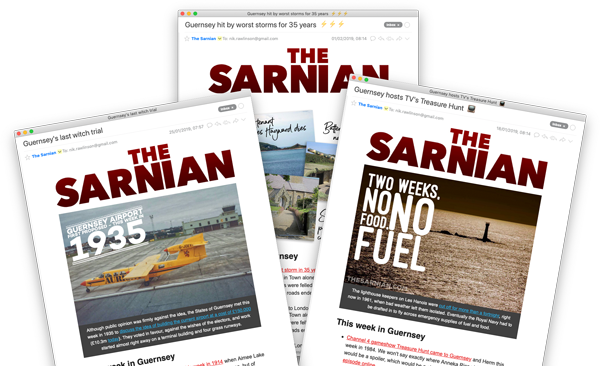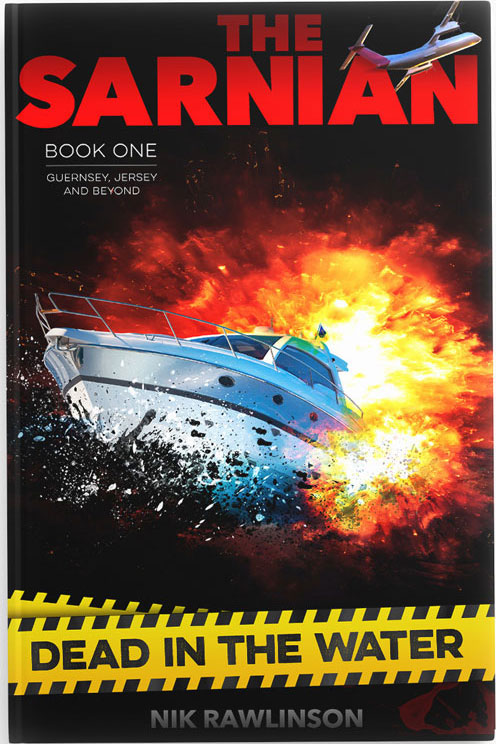Jersey

Jersey is the largest of the Channel Islands, and the head of a separate bailiwick to Guernsey. The other islands that fall within the bounds of its bailiwick are Les Erechous, La Motte, Les Minquiers, Pierres de Lecq and Les Dirouilles.
It is roughly rectangular with large beaches to the east and west. The capital is St Helier, which sits on the south coast of the island. The island itself, separate from the rest of the bailiwick, consists of 118 square kilometers and sits around 14 miles from Normandy.
Although most of the characters in the Sarnian series were born or grew up on Guernsey, including Dan Le Page, Christine’s husband, Christine Le Page herself was born and raised on Jersey. The two of them set up home on Jersey, where they had two children, and moved to Guernsey as part of a placement Christine was undertaking at Guernsey Police, at the start of book 1, Dead in the Water.
Like Guernsey, Jersey is a Crown dependency of the United Kingdom. It was previously part of the Duchy of Normandy, the dukes of which became the kings of England, which is how the island — along with the other Channel Islands — became associated with the UK. They have been self-governing since 1204.
Politics and legal system
Jersey comprises 12 parishes, as follows:
- Grouville
- Saint Brelade
- Saint Clement
- Saint Helier
- Saint John
- Saint Lawrence
- Saint Martin
- Saint Mary
- Saint Ouen
- Saint Peter
- Saint Saviour
- Trinity
It is self-governing, with 51 representatives elected to the States of Jersey or appointed by the Crown. The monarch of the United Kingdom reigns over the Bailiwick of Jersey and has her own representative on the island.
Although not a direct member of the European Union, Jersey enjoys the benefits of membership through its connection to the United Kingdom.
History of Jersey
There is evidence of habitation dating back to the bronze age, as there is on the other Channel Islands. More obvious indicators of the island’s previous inhabitants include defensive Martello Towers that were built to protect it from Norman (French) invasion and, later, concrete towers and bunkers constructed by the invading German forces during the Second World War.
Over the years, since becoming associated with the British Crown, French forces have made several attempts to take them back. Notably, a French force of 1000 arrived at the island in January 1781, but met a defensive force of 9000 local soldiers. The battle, which took place in the present Royal Square, lasted only half an hour, during which the leaders of each force were killed, along with 86 French and 16 local fighters. The French forces withdrew.
Second World War
Jersey was invaded on 1 July 1940 and occupied until 9 May 1945 when the islands when Germany surrendered. Along with the other Channel Islands, Jersey formed part of Hitler’s Atlantic Wall defences and as such was heavily fortified. The Germans were unaware that the Channel Islands had been demilitarised early in the war and sent at least three bombers over Jersey in advance of the invasion itself.
The majority of Jersey’s residents remained on the island throughout the occupation, with only around 6,500 evacuating out of a total population of around 50,000.
A light railway was built on the island to help with the construction of the fortifications but has since been removed and now forms a walking and cycling round across the island.
Present-day Jersey
Jersey’s population is now almost double what it was during the Second World War (99,500 in 2014). It makes the majority of its income from financial services, but also — like Guernsey — had a strong tourism industry.
English remains the main language spoken on the island, although around 2,500 inhabitants speak some Jerrais, the local tongue that is related to Guernsey’s Guernesiais.
Jersey in context
Jersey in brief
Jersey is the largest Channel Island, comprising around 118 square kilometers, organised into 12 parishes. It is self governing, although the British Crown reigns over it and maintains a representative on the island. Its total population is close to 100,000, of whom two are Christine Le Page and Dan Le Page, who transferred to Guernsey when Christine secured a placement on the Guernsey police force.
See also...
St Peter Port fort built in 1204
Former Garrison south of Town
Bay outside St Peter Port
Deep south coast bay
Victorian / Nazi west coast fortress

FREE Guernsey newsletter
Don't miss our weekly update on Guernsey's fascinating history. We promise never to sell your data to anyone else, and there's a super-easy unsubscribe link on the bottom of each email so you can leave whenever you want.








